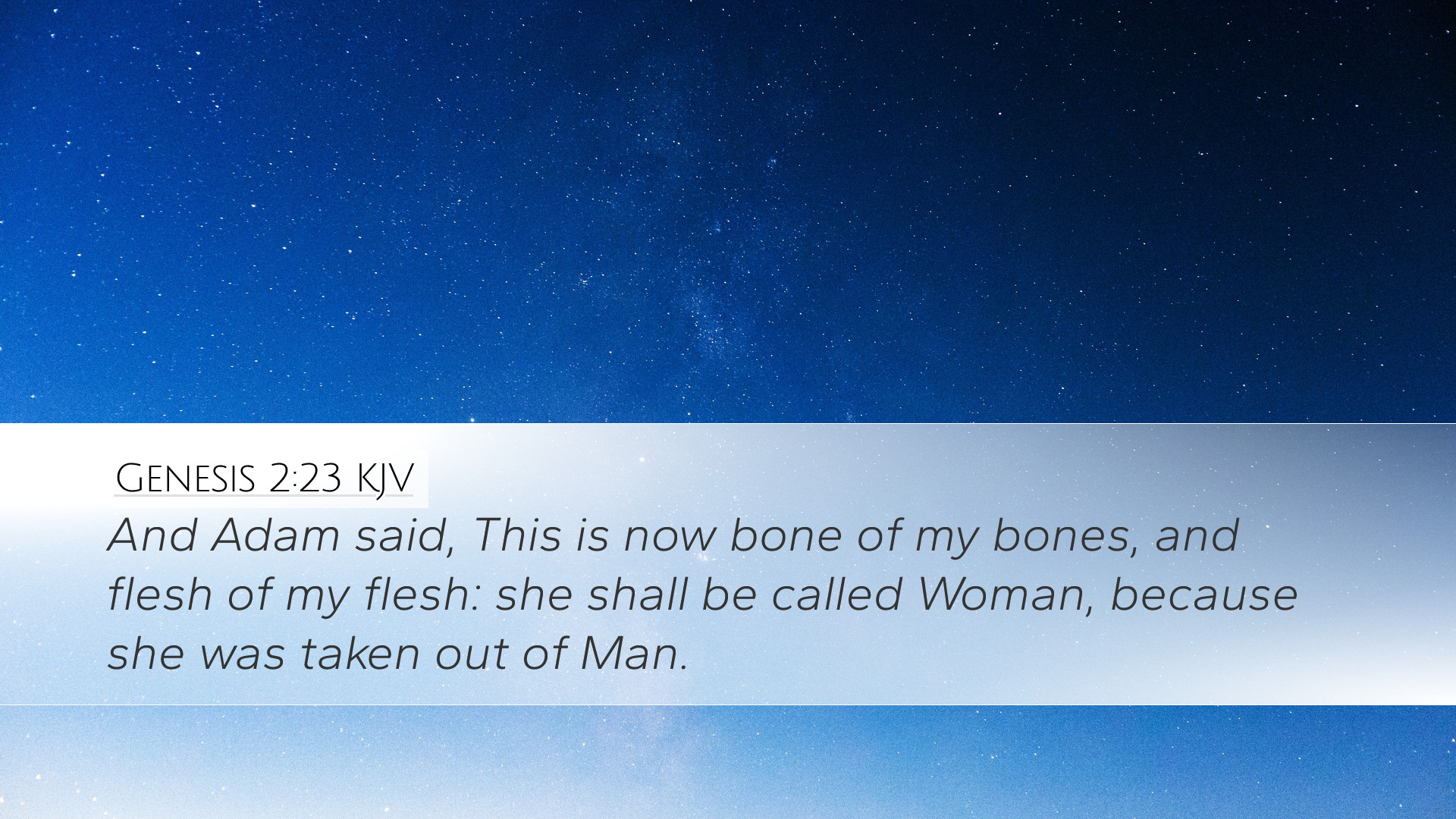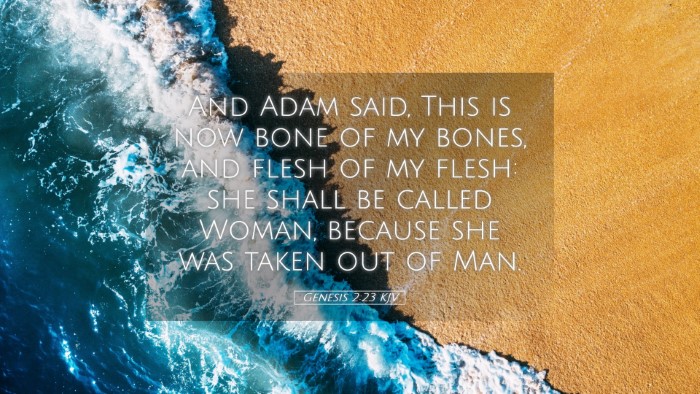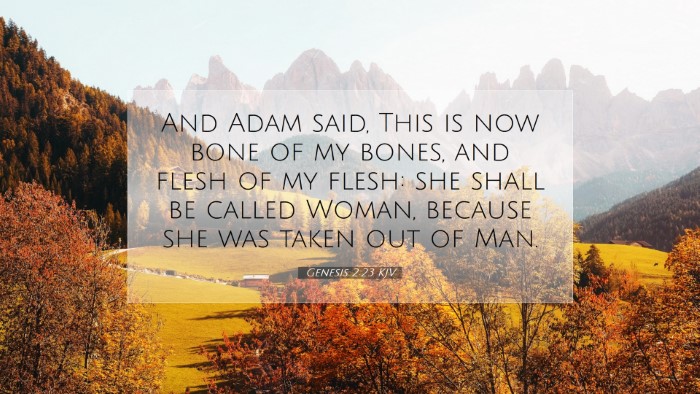Commentary on Genesis 2:23
Verse Text: "And Adam said, This is now bone of my bones, and flesh of my flesh: she shall be called Woman, because she was taken out of Man." (Genesis 2:23, KJV)
Introduction
This verse is part of the rich biblical narrative that focuses on the creation of woman and the establishment of the institution of marriage. Adam’s proclamation not only reveals his recognition of Eve but also underscores profound theological truths related to humanity, relationships, and the divine order of creation.
Adam's Recognition of Eve
Context: In Genesis 2:21-22, we see God performing the first surgery, taking a rib from Adam to create Eve. This act is significant as it denotes the intimate connection between man and woman.
Insight from Matthew Henry: Henry emphasizes that Adam’s words reflect a joyous acknowledgment of companionship. Eve being "bone of my bones" signifies equality and unity. Henry highlights the relational aspect of their creation, suggesting that God created Eve to be a partner, not a subordinate.
Insight from Albert Barnes: Barnes notes that the term “woman” is derived from the Hebrew word "isha," which is etymologically connected to "man" or "ish." This linguistic connection is not merely semantic but reinforces their foundational relationship and equality in the sight of God.
Insight from Adam Clarke: Clarke distinguishes between the physical and spiritual unity that Adam describes. He asserts that this duality is crucial for understanding marriage—both as a physical union and as a covenant relationship under God.
Theological Significance
The declaration "bone of my bones, and flesh of my flesh" is deeply theological. It speaks to the intrinsic value and dignity that God bestows upon both genders.
- Unity in Diversity: Each gender retains unique attributes reflecting God’s image, and together they complement each other uniquely in the divine design.
- Foundational To Marriage: Adam's declaration is often referenced in the context of marriage ceremonies, highlighting the sanctity and intended nature of the marital bond.
- The Social Nature of Humanity: This moment highlights the crucial belief that humans are not created for isolation, but for community and companionship.
Practical Applications
For pastors, students, and theologians, this verse teaches enduring truths about relationships and community.
- Marriage as a Divine Institution: Understanding the seriousness of the marital covenant as established by God can shape pastoral counseling and teachings.
- Gender Relations: Recognizing both complementarity and equality in genders based on this passage can inform discussions regarding gender roles in both church and society.
- Community Life: The principle of partnership illustrated in this verse extends beyond marriage into broader community relationships, emphasizing mutual support and interdependence.
Conclusion
Genesis 2:23 stands as a pivotal declaration of human relationships and God's original intention for mankind. The profound unity that Adam articulates serves not only as a description of the first marital bond but also as a theological foundation for understanding human purpose, dignity, and divine design for relationships. By reflecting on this verse, we are reminded of the sacredness of our relationships, whether it be in marriage or in the wider context of human interaction.
This insight invites us to celebrate the beauty of divine creation and to live out the relational dynamics God intended for humanity, grounded in love, respect, and mutual support.


